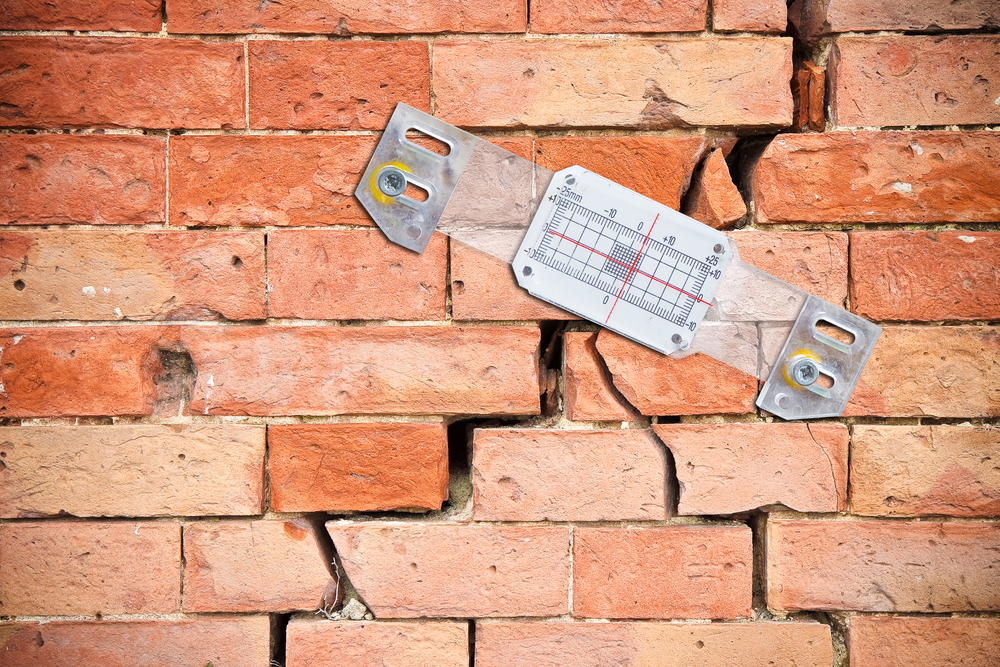
As the centuries-old saying goes, an Englishman’s home is his castle.
In many cases, it is also his main asset.
Last month, the Office for National Statistics (ONS) detailed how the average house price in the UK was £286,397 – a rise of more than two-thirds (68.4 per cent) in the course of the last decade.
It is of no small concern for Englishmen, women and children, then, for an increasing number of individuals across the country to discover that their castles are potentially built on unstable foundations.
Another summer of record temperatures and prolonged periods without rain has prompted growing anxieties about subsidence.
According to recent media reports, the number of claims arising from damage to residential properties has gone up considerably.
Some insurers have even warned that the volume of such cases this year might exceed the 20,000 or so incidents registered in 2018 which cost £145 million to put right.
There is little doubt that part of the problem is the impact due to climate change.
That it is now a fundamental element of the risk management landscape was underlined by a speech delivered in March by a senior executive at the Bank of England about its current and prospective insurance priorities.
As further shifts in the climate take place, it seems that more individuals are likely to be affected.
In fact, one estimate suggests that as many as 5.76 million homes in the UK are already at some degree of risk of subsidence, with that number set to edge even higher in the years to come.
The ground beneath our feet on this island nation is one reason why.
Clay and silt soils, which are particularly common in the UK, are ‘cohesive’, meaning that their volume depends on the amount of moisture which they contain. When their water content is high, they swell. When it drops in hot weather, they contract.
Subsidence is often the result of soil contraction or shrinkage.
As you might imagine, it means enormous headaches for homeowners whenever and wherever it occurs.
Making a claim to deal with the damage is not a simple process either.
It requires thorough monitoring to determine the exact nature of the problem and the most appropriate remedial method. That work can be expensive – the cost of structural repairs in some of the cases which I have dealt has totalled six figures.
Given that it is imperative to find a lasting solution, such checks need to measure how the ground beneath a property moves and the cracks which it creates develop over time, so it can be quite a while before the actual repair work can begin.
Indeed, some of the more troublesome instances can take years to fix.
Naturally, the whole situation can be incredibly stressful for the families concerned.
I believe that the insurance industry can do more to help them in their time of need.
In my experience and that of many of my peers who have acted on behalf of homeowners whose properties have been blighted by subsidence, their worries have been compounded by being left relatively in the dark about what is going on during the assessments.
The number of different specialists involved – insurers, loss adjusters, engineers and more – means that it can be difficult to establish who precisely is managing the claim.
As a result, homeowners or their brokers often end up pursuing those handling a claim in search of news and I feel that shouldn’t be the case.
If the insurance industry is to truly serve those who rely on it, each claim should be assigned to a single claim manager or team, with regular, clear updates.
The consequences of subsidence are bad enough. A lack of information almost adds insult to structural injury.
Making the sorts of improvements which I am proposing would, I suggest, be to the betterment of insurance professionals too.
After all, if climate change really is to affect many more homes and businesses in the years to come, it will presumably pay dividends to be prepared rather than forced to react to evolving environmental circumstances.
If the latter was the case, insurers might really find themselves on very shaky ground.
